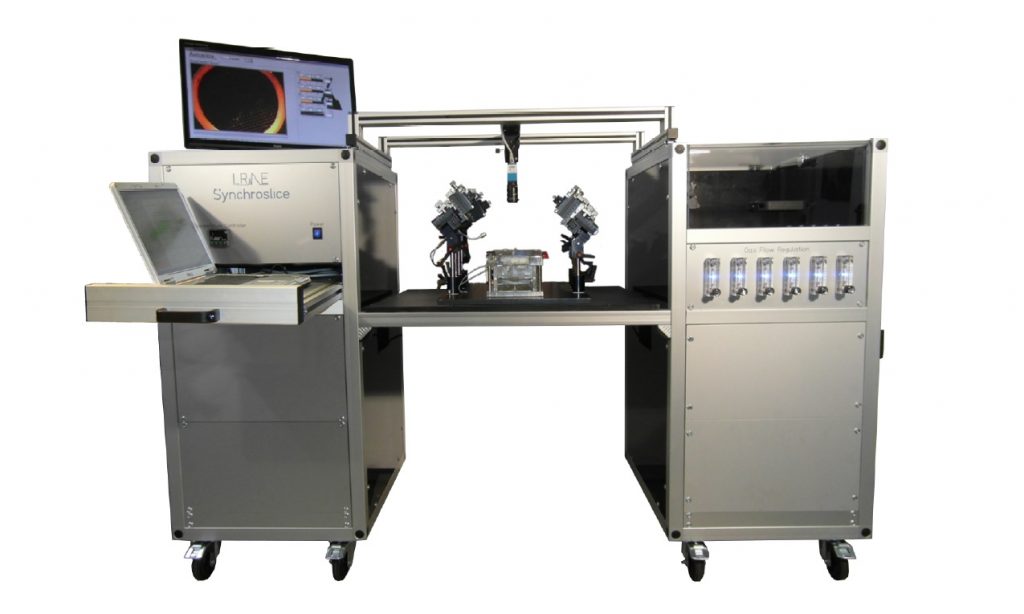Multiple Slice Recordings using the Synchroslice System
Since the early 1970th when this technique was developed by McIlwain, the brain slice technique became an essential tool in many areas of brain research. The procedure to cut brain tissue in small slices, which can be maintained over hours when superfused with oxygenated ringer solution, made it possible to study connectivity or influence of drugs on connected neurons in vitro. Today, not only the brain is studied with the tissue slice technique, but also other structures like the heart or the lung are investigated.
One of the main limiting factors of the tissue slices technique is the low tissue throughput. In particular, when working on long-term potentiation (LTP) and depression (LTD) as model for learning and memory, a higher throughput of slices is essential, but is not achievable with single setups due to the long-lasting experimental times. By using the multiple slice evaluation system Synchroslice, which was developed by Lohmann Research Equipment, this problem can be overcome by the fact that 4 or even 8 tissue slices can be studied simultaneously.
–> Multiple slice Recording from brain slices –> Multiple slice Recording from heart slices
